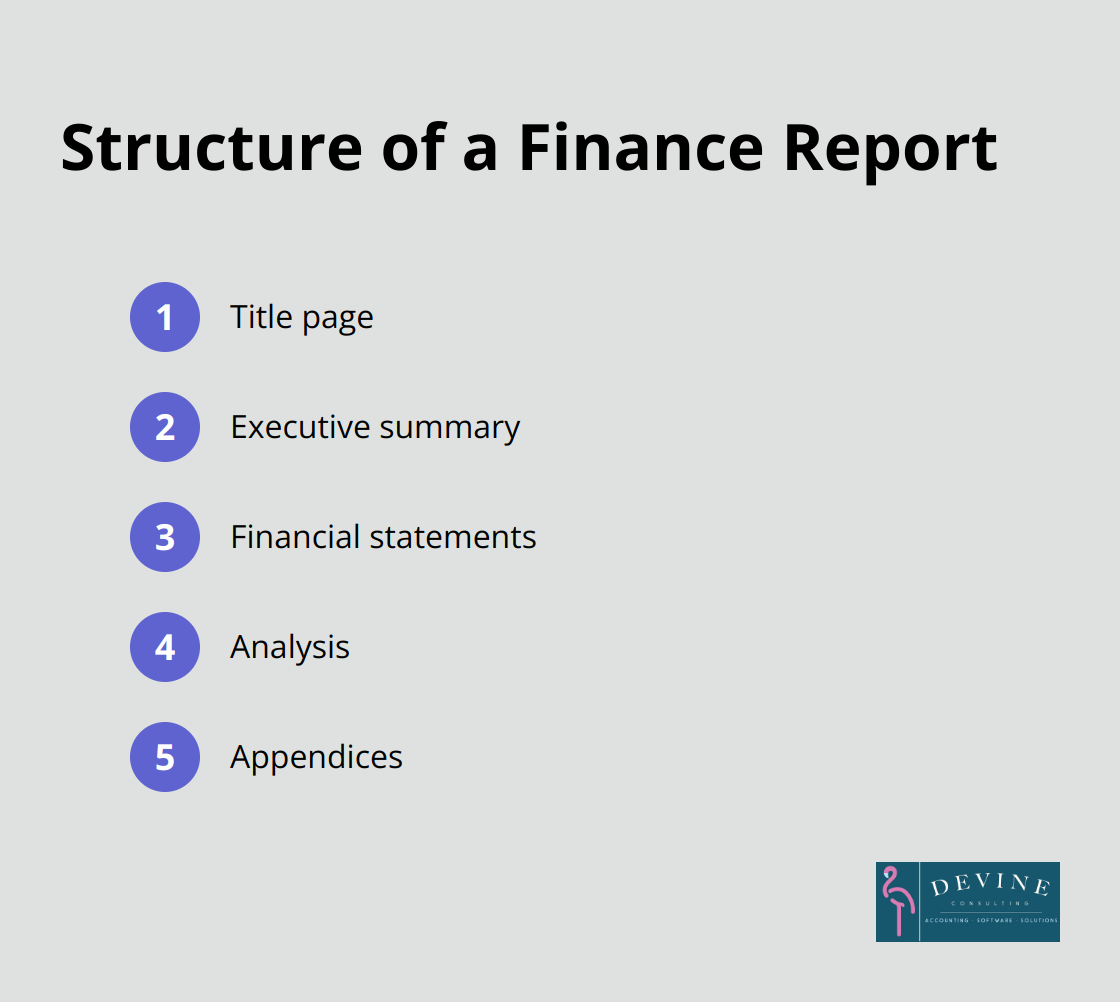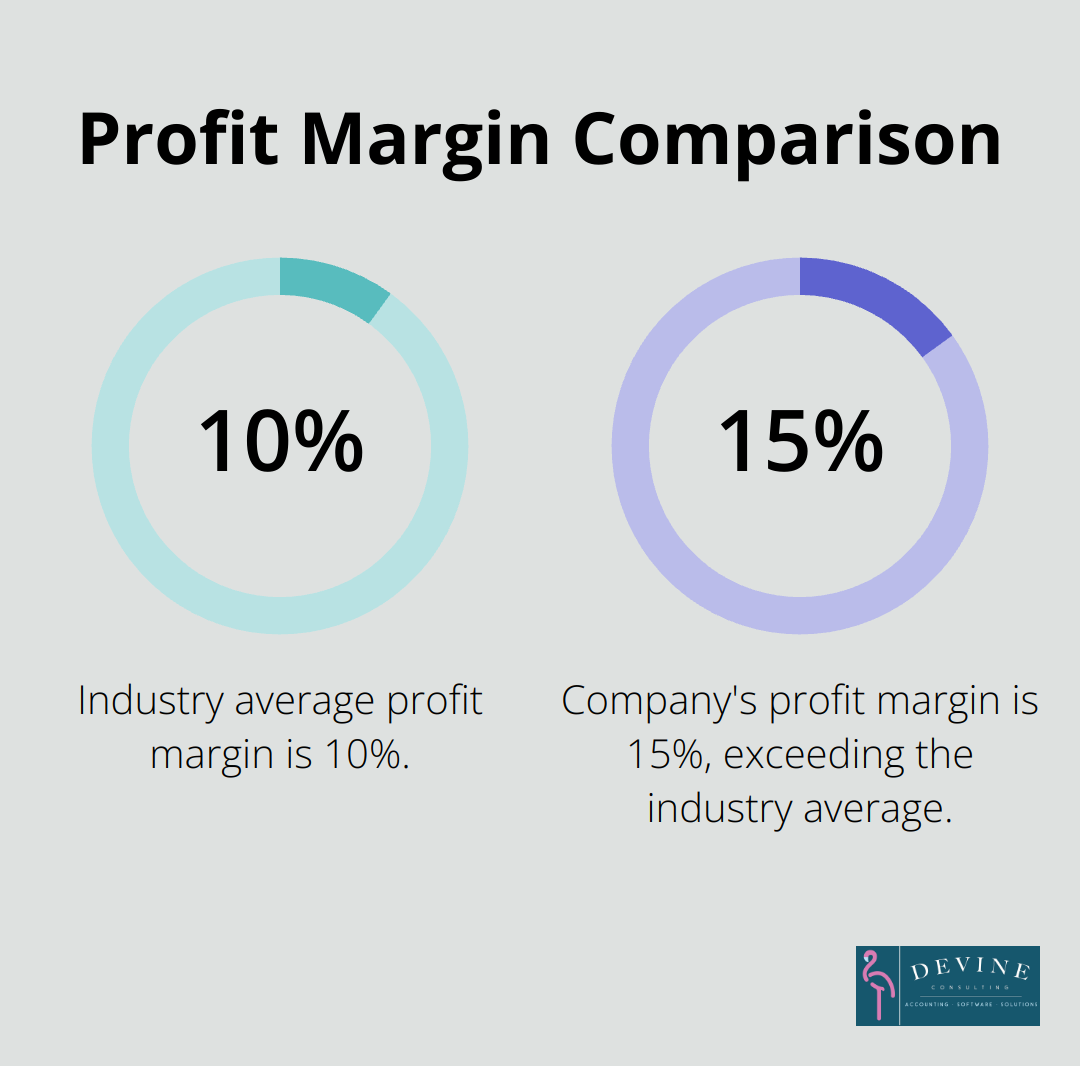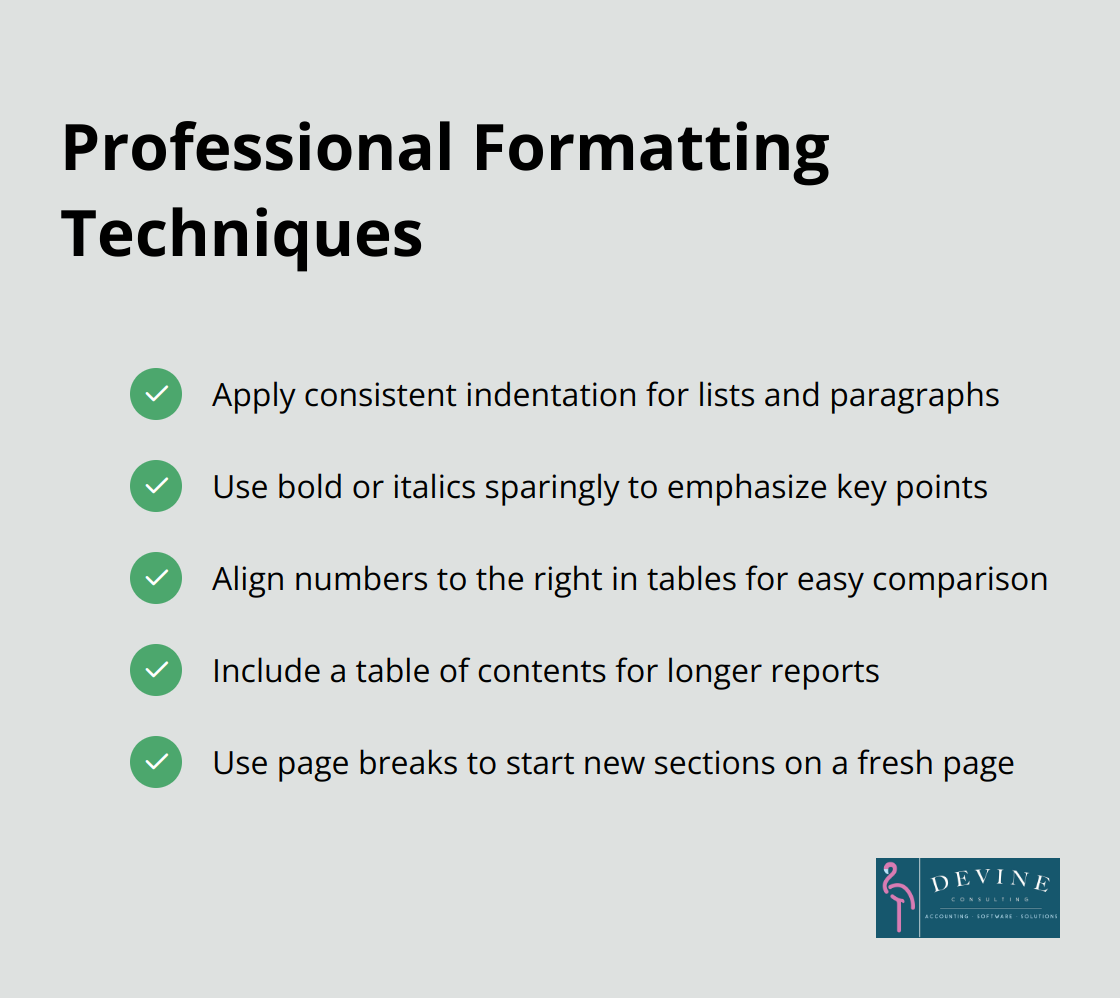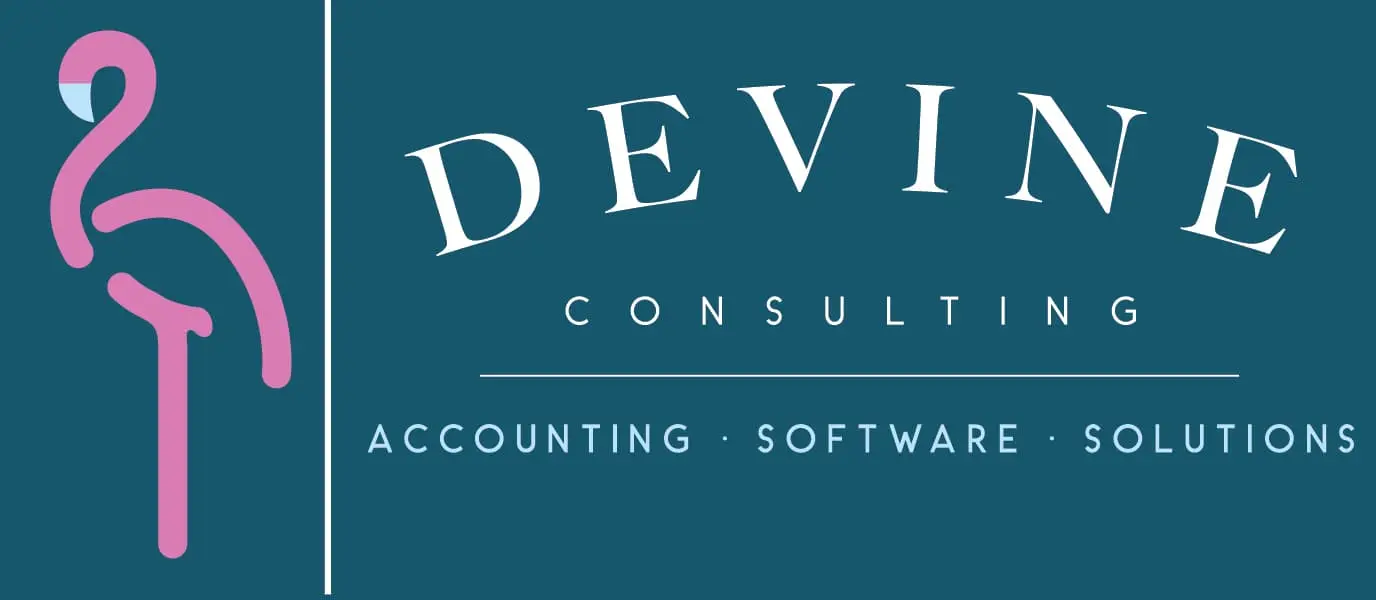Create a Finance Report Template in Word: Step-by-Step Guide
Creating a finance report template in Word can streamline your financial reporting process. At Devine Consulting, we understand the importance of clear and professional financial documentation.
This step-by-step guide will walk you through setting up a finance report template in Word, covering essential components and formatting tips. By the end, you’ll have a customizable template ready for your specific reporting needs.
How to Set Up Your Finance Report Document
Selecting the Right Microsoft Word Version
Download financial statement templates in Microsoft Word, including personal, business, nonprofit, startup and analysis templates.
Configuring Page Layout
Set up your page layout with precision. Use standard letter size (8.5 x 11 inches) with 1-inch margins on all sides. This layout creates a clean, professional look while providing ample space for content.
To set margins:
- Click the “Layout” tab
- Select “Margins”
- Choose “Normal” or customize as needed
Apply these settings to the entire document for consistency.
Choosing Appropriate Fonts
Font selection impacts readability and professionalism. Use a clean, sans-serif font (like Arial or Calibri) for body text, set at 11 or 12 points. For headings, increase the size to 14-16 points. You may use the same font or a complementary serif font (such as Times New Roman) for variation.
Limit your document to two font types for a cohesive look. Use bold or italics sparingly to emphasize key points without cluttering the page.
Structuring Your Document
Create a clear structure for your report using Word’s “Styles” feature. Define consistent formatting for headings and subheadings. This approach ensures visual consistency and allows for easy navigation and automatic table of contents generation.
Organize your document with these sections:
- Title page
- Executive summary
- Financial statements
- Analysis
- Appendices
Use page breaks between major sections to keep your content organized and easy to navigate.

This structured approach to setting up your finance report template will streamline your reporting process. The next section will explore the essential components that make up a comprehensive finance report.
What Should a Finance Report Include?
The Power of a Strong Executive Summary
Your executive summary creates the first impression of your financial story. Limit it to one page and highlight key financial metrics, significant changes, and future projections. For instance, if your company’s revenue grew by 15% this quarter, start with that information. Follow up with brief explanations of major factors that influence your financial position.
Financial Statements: The Core of Your Report
Financial statements form the heart of your report. Include a balance sheet, income statement, and cash flow statement. These provide a snapshot of your financial health, profitability, and liquidity.
In the balance sheet, separate current and non-current assets and liabilities clearly. This separation helps readers quickly assess your short-term financial position. For the income statement, group similar expenses together to show how different cost categories impact your bottom line.
The cash flow statement often gets overlooked but remains crucial. It shows how changes in balance sheet accounts and income affect cash and cash equivalents. This statement holds particular importance for businesses that are profitable on paper but struggle with cash flow.
Bringing Numbers to Life with Analysis
Raw numbers alone don’t tell the full story. Your analysis should explain the ‘why’ behind the figures. If your gross margin increased from 30% to 35%, explain the factors that led to this improvement. Did more efficient production processes, better supplier negotiations, or a shift in product mix cause this change?
Use industry benchmarks to provide context. If the average profit margin in your industry is 10% and yours is 15%, highlight this compelling point.

Visual Appeal: Graphs and Charts
Humans process visual information faster than text. Use this to your advantage. Create clear, labeled charts to illustrate trends over time or comparisons between different aspects of your business. Bar charts work well for comparing different categories, while line graphs excel at showing trends over time.
A word of caution: don’t overdo it. Each visual should serve a purpose and provide additional insight (not just repeat information already stated in the text).
The next chapter will explore how to format these essential components to create a professional and polished finance report that captivates your audience and communicates your financial story effectively.
How to Format Your Finance Report Like a Pro
Establish Consistency
Create a visually appealing and easy-to-read finance report by establishing a consistent style throughout your document. Use the same font, size, and color for all body text. Limit headings to a maximum of three levels, each with its distinct style. This hierarchy helps readers navigate your report effortlessly.
Microsoft Word’s Styles feature allows you to apply a set of formatting characteristics, including font and paragraph settings, with the click of a button. This saves time and ensures consistency even when multiple team members work on the report.
Utilize White Space
Don’t fear white space. It’s a powerful tool for readability. Add generous margins (at least 1 inch on all sides) and use paragraph spacing to separate sections. This prevents your report from looking cluttered and overwhelming.
Add 6 points of space before paragraphs and 12 points after. This subtle difference creates a natural flow from one paragraph to the next.
Optimize Tables
Tables present financial data clearly and concisely. Use Word’s built-in table styles for a professional look. Customize these styles to match your report’s overall design.
Alternate row colors in your tables. This simple trick makes it easier to spot trends or anomalies, especially when differentiating between monthly revenues and expenses.
Label your tables clearly and consistently. A numbering system (Table 1, Table 2, etc.) helps when referencing specific data points in your analysis. The Financial Accounting Standards Board (FASB) recommends a consistent format for tables throughout your report to facilitate easier comprehension.
Leverage Headers and Footers
Headers and footers display important information like the report title, date, page numbers, and your company logo. This ensures that even if pages get separated, each one can be identified and placed back in order.
For multi-section reports, use different headers for each main section. This helps readers quickly identify which part of the report they’re in.
Apply Professional Formatting Techniques
Use these techniques to make your financial story clear, accessible, and impactful:
- Apply consistent indentation for lists and paragraphs
- Use bold or italics sparingly to emphasize key points
- Align numbers to the right in tables for easy comparison
- Include a table of contents for longer reports
- Use page breaks to start new sections on a fresh page

Final Thoughts
A finance report template in Word streamlines your financial reporting process. It ensures consistency and professionalism in your documents. You can now set up your document, include essential components, and apply professional formatting techniques.
Customize your finance report template to meet your specific industry needs and organizational requirements. This personalization will effectively communicate your unique financial story. Your well-designed template will save time, reduce errors, and allow for easy updates as your financial data changes.
At Devine Consulting, we offer comprehensive accounting solutions to help maintain your financial stability. Our expertise allows you to focus on core business operations while we handle your financial reports. We strive to create precise, informative, and tailored reports that drive your business forward.


